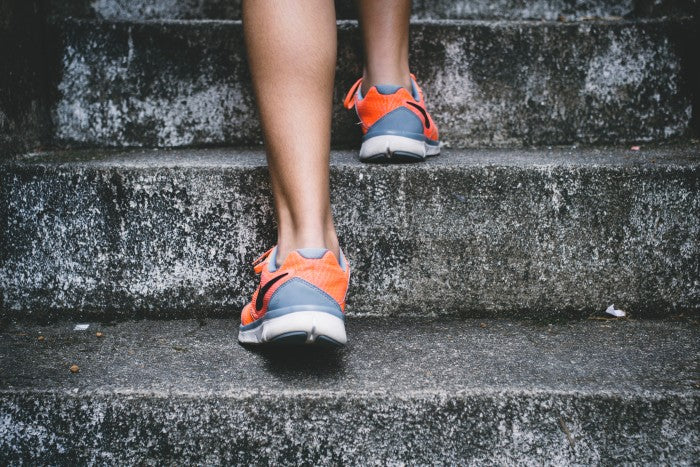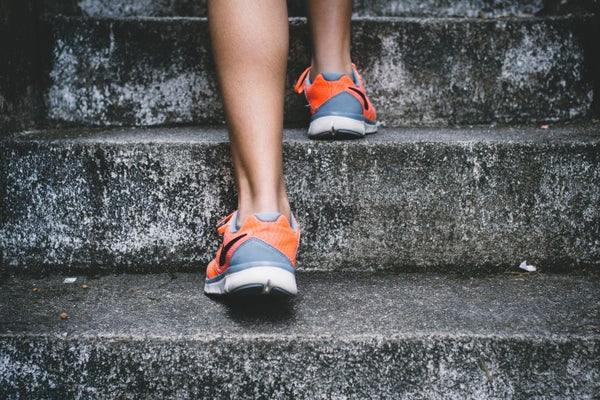
STARTING A FITNESS ROUTINE AS A SENIOR - THINGS TO CONSIDER
Share
This is a guest post by Danielle Roberts
Maintaining a healthy weight and mobility as you age is easier when you stay active. Being fit isn’t necessarily all about losing weight and living at the gym, it’s more about staying active and eating a nutritious diet.
While it’s hard to admit sometimes, it’s difficult to keep the same intensity in your workout as a senior. This is an important thing to remember if you’re starting a fitness routine. If you’re ready to take the next step, here are several things to consider in choosing the right routine.

Ease into It
Start slow with new physical activities that challenge your body. This goes for all ages but it’s especially crucial for seniors. Our bodies take time to adjust and overdoing a fitness routine right off the bat not only increases the chances of burnout, it also increases the chance of injury.
Results don’t happen overnight. There is no problem with slowly working toward your fitness goals. In fact, for seniors, it’s encouraged.
Stretch!
Flexibility plays a major role in overall mobility. To keep the muscles from tensing up and tearing as you work out, stretching every day before and after a workout is recommended. NIHSeniorHealth encourages seniors to incorporate 12 exercises focused on flexibility into their fitness routine to progress their flexibility and enhance their freedom of movement.
Remain Consistent
Doing something either every day or several times a week is what is going to get your body to progress the way you want it to. Early morning routines tend to work best for seniors who want to make a fitness regimen part of their daily routine. Again, don’t overdo it and listen to your body if the routine is starting to strain your body too much. A simple 30-minute walk every day can do wonders for the body and mind!

Senior-friendly Exercises to Consider
Not every workout or activity will work for every senior, so it’s always good to know there are different options available. Popular exercises for seniors include:
Yoga
Seniors are progressively looking into to yoga because of its benefits related to things such as reducing anxiety levels and managing arthritis pain. Many senior centers, health clubs, assisted living centers and even churches now offer senior-friendly yoga classes and other limited mobility fitness classes.
Water Aerobics
This form of exercise is a great resistance workout without the added pressure on the joints, muscles and bones. It’s a great way to get the heart rate up and maintain good mobility minus the heat and excessive sweating that comes from other forms of cardio.
Light Weights
To keep from putting too much pressure on the body and reduce the risk of injury, seniors are recommended to do lightweight training if strength building is the goal in your fitness routine. Seniors should aim toward exercising all major muscle groups at least 30 minutes twice a week and avoid targeting the same muscle group on consecutive days.
Nature Walks
As mentioned earlier, simply walking 30 minutes every day or several days a week does wonders for the body. Walking can be done anywhere and can be done at a comfortable pace. Getting outside to take a stroll around the neighborhood or at your local park is a great way to maintain light, physical activity and is oftentimes very therapeutic.
Since the body is sensitive and only gets more sensitive with age, seniors are encouraged to consult with their healthcare provider before making any drastic changes to their fitness routine or when starting a fitness routine. Everybody has different areas of concern and different health conditions, so a healthcare provider or primary physician is the perfect person to consult to avoid straining those areas of concern and increasing any chance of injury.
ABOUT DANIELLE
Danielle Roberts writes regularly for many online publications, including Forbes, where she is a member of the Finance Council. A TCU journalism graduate and former magazine editor, she covers various topics affecting seniors. daniellekroberts.com
